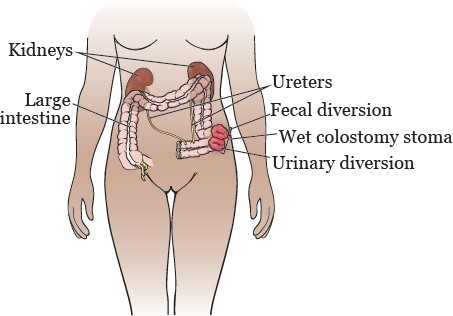The practical nurse (PN) hears an older resident of a long-term care facility shout profanities at an unlicensed assistive personnel (UAP) who shouts back at the resident. Which is the first action the PN should take?
Report the incident and the UAP for further action by the nurse manager.
Tell both of them to lower their voices in consideration of other residents.
Tell the resident and the UAP that shouting is not permitted.
Enter the room and tell the UAP to leave the room immediately.
The Correct Answer is D
When the PN witnesses a situation where a resident is shouting profanities and a staff member (UAP) responds inappropriately, the immediate priority is to ensure the safety and well-being of the resident. It is essential to address the situation promptly and prevent further escalation.
Entering the room and instructing the UAP to leave immediately serves several purposes:
1. Protecting the resident: Removing the UAP from the room ensures that the resident is not subjected to further conflict or distress.
2. Maintaining a calm and therapeutic environment: By addressing the disruptive behavior and removing the staff member involved, the PN can help restore a peaceful environment for the resident and other individuals in the facility.
3. Ensuring professional conduct: Shouting and engaging in unprofessional behavior is not acceptable in a healthcare setting. By immediately intervening and directing the UAP to leave the room, the PN reinforces the importance of maintaining a respectful and professional approach to caregiving.
After addressing the immediate concern, the PN should follow up by reporting the incident and providing a detailed account to the nurse manager or supervisor. This allows for appropriate action to be taken, such as further investigation or disciplinary measures if necessary.
The other options mentioned are not the first actions to be taken in this situation:
A. Reporting the incident and the UAP for further action by the nurse manager: While reporting the incident is important, it is not the immediate action required to address the situation in
real-time.
B. Telling both of them to lower their voices in consideration of other residents: While promoting a calm environment is important, addressing the issue of shouting and unprofessional behavior takes precedence over requesting a volume reduction.
C. Telling the resident and the UAP that shouting is not permitted: While it is essential to communicate the expectations of behavior, the immediate focus should be on removing the staff member from the situation and ensuring the resident's well-being.
Nursing Test Bank
Naxlex Comprehensive Predictor Exams
Related Questions
Correct Answer is B
Explanation
Elevations in troponin I and CK-MB levels indicate myocardial damage, which can result from insufficient blood supply to the heart muscle due to coronary artery disease. When the heart muscle is damaged, it can lead to abnormal electrical activity and rhythm disturbances, known as cardiac dysrhythmias. These dysrhythmias can be life-threatening and require immediate attention.
Transient ischemic attack (TIA) refers to a temporary interruption of blood flow to the brain, which is not directly related to the elevated troponin I and CK-MB levels. Therefore, monitoring neurological vital signs for TIA is not the most significant risk in this case.
Pulmonary embolism, while it is a serious condition, is not directly indicated by the elevated troponin I and CK-MB levels. Lifestyle modifications may be important for managing coronary artery disease but are not the most significant risk based on the given information.
Recurrent long-term angina pain and subsequent myocardial infarction (MI) may be a concern for the client with coronary artery disease, but the elevated troponin I and CK-MB levels suggest that myocardial damage has already occurred. The focus at this point would be on managing the acute myocardial damage and the risk of cardiac dysrhythmias.
Correct Answer is C
Explanation
The client's question about whether the surgical opening will be visible suggests that they have concerns or misconceptions about the upcoming fecal diversion surgery. By reviewing the client's expectations of elimination after surgery, the PN can provide accurate information and address any anxieties or concerns the client may have.

The other options are not directly related to the client's question and are not the most appropriate actions to take in this situation:
A. Determining if this is the client's first indwelling catheter is unrelated to the client's question about the visibility of the surgical opening. It may be important to assess the client's history of urinary catheter use for other purposes, but it does not address the client's immediate concern.
B. Asking the client if they finished the bowel sterilization prescription is also unrelated to the visibility of the surgical opening. While bowel sterilization may be a part of the preoperative preparation for fecal diversion surgery, it does not address the client's questions and concerns.
D. Verifying that the client had nothing by mouth (NPO) for the past 24 hours is important for general preoperative care but does not address the client's specific question about the visibility of the surgical opening.
Whether you are a student looking to ace your exams or a practicing nurse seeking to enhance your expertise , our nursing education contents will empower you with the confidence and competence to make a difference in the lives of patients and become a respected leader in the healthcare field.
Visit Naxlex, invest in your future and unlock endless possibilities with our unparalleled nursing education contents today
Report Wrong Answer on the Current Question
Do you disagree with the answer? If yes, what is your expected answer? Explain.
Kindly be descriptive with the issue you are facing.
